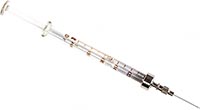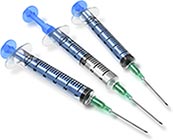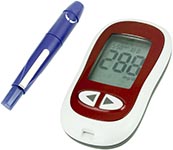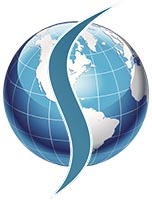Non Surgical Spine Care
Greater than 98% of spine pain episodes can and should be treated NON-OPERATIVELY.
In any emergent neck or back pain episode, a physician should determine if your pain is caused by a serious condition. A careful neurologic exam will determine if you have any pinched nerves that need immediate surgical attention or if there are any deficits caused by spinal cord compression. These symptoms can include weakness, pain, loss of bowel or bladder function or even paralysis and can be caused by disc herniation, fractures, trauma or stenosis.
Once the physician determines immediate surgery is not necessary a patient can, and should, get better with time and conservative measures.
At ShimSpine, we are strong believers in conservative care. If these treatments are provided by well trained, ethical practitioners, they should be effective and help our patients avoid surgery.
MEDICATIONS:
 In our Practice, Non-Surgical Spine Care starts with determining the severity of pain. We know each patient has a different pain tolerance. If you have been on chronic narcotic use for a long time, it will be difficult to get any immediate pain relief as you likely no longer respond to normal pain medications. In this instance, we would refer you back to your Pain Management Specialist to manage your medication needs. In the state of Florida, pain management clinics are highly regulated, and there are required drug testing requirements that must be monitored. If you do not have any chronic medication needs, we will assess your medication needs. Depending on your medical history, medications offered include a combination of NSAIDS, Medrol, Tramadol, Muscle Relaxers and mild narcotics. For most patients, the need for the heavier narcotic medications is only for short durations.
In our Practice, Non-Surgical Spine Care starts with determining the severity of pain. We know each patient has a different pain tolerance. If you have been on chronic narcotic use for a long time, it will be difficult to get any immediate pain relief as you likely no longer respond to normal pain medications. In this instance, we would refer you back to your Pain Management Specialist to manage your medication needs. In the state of Florida, pain management clinics are highly regulated, and there are required drug testing requirements that must be monitored. If you do not have any chronic medication needs, we will assess your medication needs. Depending on your medical history, medications offered include a combination of NSAIDS, Medrol, Tramadol, Muscle Relaxers and mild narcotics. For most patients, the need for the heavier narcotic medications is only for short durations.
EXERCISE:
 For many of our patients, the time and expense of Physical Therapy may not fit into their budget. In addition, various research studies have shown that stretching and remaining active decreases the episode of back and neck pain. Within our website, we have several pages dedicated to gentle stretching activities for neck and back pain. As we often tell patients, you can do these in bed in the morning. We recommend doing these stretches twice a day.
For many of our patients, the time and expense of Physical Therapy may not fit into their budget. In addition, various research studies have shown that stretching and remaining active decreases the episode of back and neck pain. Within our website, we have several pages dedicated to gentle stretching activities for neck and back pain. As we often tell patients, you can do these in bed in the morning. We recommend doing these stretches twice a day.
PHYSICAL THERAPY:
For certain patients, the pain and stiffness can be overwhelming. The guidance of a Physical Therapist, as well as some gentle tissue massage, ultrasound and electrical stimulation may be necessary to help patients overcome the pain and the fear associated with stretching and exercise. We usually recommend patients go to therapy, with a goal of transitioning to their own home exercise and stretching program within 4-6 weeks.
LOCAL CORTISONE INJECTIONS:
 For some patients, there can be localized areas of tightness, or muscle tenderness that are amenable to local cortisone injections. Usually, the areas are to the neck, trapezius muscles, and the lower back near the sacroiliac areas. These local cortisone injections have a local effect on the areas of tenderness, then have a systemic effect where the cortisone (which is a form of a steroid), will have a total body anti-inflammation effect. There are potential side effects to these injections, so your Physician should counsel you on these effects.
For some patients, there can be localized areas of tightness, or muscle tenderness that are amenable to local cortisone injections. Usually, the areas are to the neck, trapezius muscles, and the lower back near the sacroiliac areas. These local cortisone injections have a local effect on the areas of tenderness, then have a systemic effect where the cortisone (which is a form of a steroid), will have a total body anti-inflammation effect. There are potential side effects to these injections, so your Physician should counsel you on these effects.
EPIDURAL STEROID INJECTIONS AND FACET INJECTIONS:
 Depending on the longevity of your complaints, your physician may order diagnostic testing including MRI’s or CT scans of your spine. If the tests reveal disc herniations, or arthritis to certain spine areas, your physician may determine that these findings may be the cause of your pain. Depending on the nature of the findings, and presentation, these deeper injections may be offered to treat compressed nerves or arthritis to the spine.
Depending on the longevity of your complaints, your physician may order diagnostic testing including MRI’s or CT scans of your spine. If the tests reveal disc herniations, or arthritis to certain spine areas, your physician may determine that these findings may be the cause of your pain. Depending on the nature of the findings, and presentation, these deeper injections may be offered to treat compressed nerves or arthritis to the spine.
LIFESTYLE CHANGES:
We must face the reality that some of the spine pain are secondary to our genetics, and aging. We cannot choose our parents, and we cannot chose not to age. Still, we can take lifestyle steps to improve our lives. Proper diet, and weight management are essential when dealing with a spine problem. Activity modification, including substitution of certain activities may be helpful. Stay active, but consider a lower impact activity. STOP SMOKING, PERIOD. Psychologic Stressors definitely make any pain worse. Examine your relationships, and your commitments, and remove the removable life stressors.
MEDICAL COMANAGEMENT:
Certain medical conditions such as diabetes, gout, or rheumatoid disease, can exacerbate spine pain. Certain medications for cholesterol, cardiac management, etc. can have Spine Pain side effects. Make sure you manage these medical conditions, and discuss potential muscle pain side effects with your physician.
FIND A SPINE SPECIALIST YOU TRUST:
 When anyone is in severe pain, there will always be a concern that some serious condition is being missed. Insecurity of the diagnosis leads to more angst, therefore more pain, and likely much more unnecessary diagnostic testing. There is the well-known black box theory, whereby all patients with severe back pain are put in a black box for three months, and by the end 98% are all better, no matter what you did. That tells you that patients can spend thousands of dollars on “new improved” treatments or surgery, or spend nothing, and there is an excellent chance they will feel better in 3 months, either way.
When anyone is in severe pain, there will always be a concern that some serious condition is being missed. Insecurity of the diagnosis leads to more angst, therefore more pain, and likely much more unnecessary diagnostic testing. There is the well-known black box theory, whereby all patients with severe back pain are put in a black box for three months, and by the end 98% are all better, no matter what you did. That tells you that patients can spend thousands of dollars on “new improved” treatments or surgery, or spend nothing, and there is an excellent chance they will feel better in 3 months, either way.
The most important thing with all these treatments is to trust your physician. This takes time and when you are having pain, it is difficult not to “go for the quick fix”. Some of these treatments (exercise, injections) increase pain before they actually help so you need to trust the person who is over-seeing your care. If the pain does not improve, despite these non-surgical Spine Care treatments, there are other options that can be explored.
Last modified: October 22, 2019





